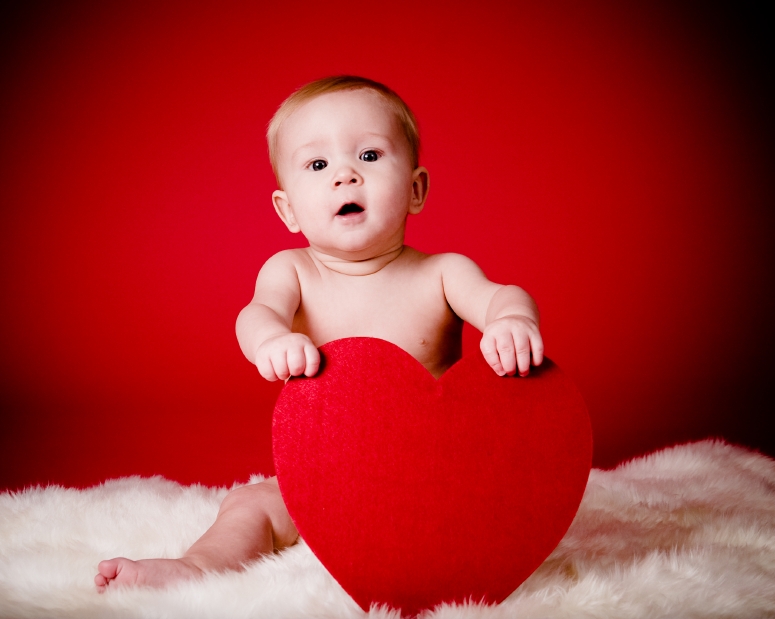When a category 4 tornado hit St. Louis in 2011, ripping the roof off our airport, I was home alone with three children and 7  months pregnant with my 4th. Yet I knew we were safe in our fully stocked tornado shelter. No, we don’t have a bunker in our backyard, we have a family emergency kit in our basement. Being prepared for an emergency is neither difficult nor expensive, but it does require some advanced planning, especially for families with children.
months pregnant with my 4th. Yet I knew we were safe in our fully stocked tornado shelter. No, we don’t have a bunker in our backyard, we have a family emergency kit in our basement. Being prepared for an emergency is neither difficult nor expensive, but it does require some advanced planning, especially for families with children.
September has been named “National Preparedness Month” by the Federal Emergency Management Agency (FEMA), and this year’s theme is “Be Disaster Aware, Take Action to Prepare”. The American Academy of Pediatrics has joined forces with FEMA to help families with children prepare for disasters. Have you put together a family emergency kit? We’ll get you started.
If you search online for pre-made emergency or disaster preparedness kits, you’ll find overpriced kits full of things you are unlikely to need, and things that expire and require replacement. This market profits off fear-mongering, and if you search too long your may find yourself wondering if you need to equip your family to survive volcanic eruption. Before purchasing a solar-powered chain saw and building your off-the-grid cabin, start with this simple list from FEMA, with my added comments:
1) Water, one gallon of water per person per day for at least three days for drinking and sanitation. We just bought a few 5-gallon water cooler jugs that are sold for office water coolers. We also have a water bottle for each member of our family, labeled with their name. Another option is just to buy a case of disposable water bottles. Every time we do this, though, someone starts stealing from our emergency stash for everyday use…
2) Food, at least a three-day supply of non-perishable food. It’s hard to justify spending money on food you probably will never eat, so I’ve merged our family’s emergency food supply with our commitment to donate food to a local food pantry. Every November I go grocery shopping for our emergency food bin. I spend about $100 for my family of 7. I have one plastic bin full of non-perishables, plus a can opener. (I threw in a bottle of wine and a cork screw, too). Each year I go through my bin, donate the year-old food to a local food pantry, and replenish it with new supplies. Most canned goods (i.e. tuna) are good for at least two years, so I am able to safely donate it. Even if we never use our emergency food supply, I can feel good about donating $100 of canned goods to a food pantry each year.
3) Battery-powered or hand crank radio and a NOAA Weather Radio with tone alert and extra batteries for both. We bought this item online—we found a hand-crank powered gadget that is a radio, flashlight, and cell phone charger. It has batteries and a hand-crank as a back-up in case your batteries die. There are many similar models available, ranging in price from about $10-$35. Our kids found this item so exciting that they played with it until it broke. We didn’t tell them we bought a new one—it stays with the rest of our emergency supplies on a high shelf in our basement.
4) Flashlight and extra batteries. If your hand-crank gadget in #3 has a flashlight, you may not need another. Ideally, though, you’ll need a flashlight for every member of your family. We have a set of camping headlamps that we keep in our bin of camping gear, right next to our emergency kit.
5) First aid kit: Every family needs a first-aid kit in their car—if you don’t have one, check out my article and video on how to build the essential family first aid kit. Keep your family first aid kit in the car so that you’ll always have what you need when you need it. If you keep a first aid kit at home, you won’t have it when you are out and about. If you keep it in the car and you need something while at home, you can always go out a get it. I do have a mini first-aid kit with some Band-Aids and antiseptic wipes in our emergency kit in the basement.
6) Whistle to signal for help: This in an inexpensive and small item that’s not worth skipping.
7) Dust mask, to help filter contaminated air and plastic: We have N-95 masks that meet CDC guidelines for prevention of TB. N-95 masks are sized, and children and small adults require smaller sizes. You can buy them at home improvement stores or online, including Amazon. They cost about a dollar each.
8) Sheeting and duct tape to shelter-in-place: We have a paint drop-cloth and duct tape. Plastic drop cloths are inexpensive, don’t weight much, and fold up quite small.
9) Moist towelettes, garbage bags and plastic ties for personal sanitation: I threw in a pack of baby wipes and some small trash bags. Let’s be clear, this could be your toilet.
10) Wrench or pliers to turn off utilities: Find some old tools at a yard sale to add to your safety kit.
11) Local maps: You’ll need the old-fashioned paper kind if cell phones are down. Do you have an old map you don’t use anymore now that we all use digital ones? Stick it in your emergency bin.
Additional items to consider:
1) Prescription medications and glasses: If a family member is dependent on a medication, it’s a good idea to have a few spare pills in your family first aid kit and/or emergency kit. Now that you can buy eyeglasses online for $12, it’s becoming reasonable to include them in an emergency kit.
2) Infant formula and diapers: It’s too hard to keep changing out the diapers in my emergency kit every time one of my kids changes diaper size, so I just keep a bunch of size 3 diapers in there. If you include formula, make sure you change it out regularly because it expires.
3) Pet food and extra water for your pet: consider non-perishable options with a long expiration date.
4) Important family documents such as copies of insurance policies, identification and bank account records in a waterproof, portable container: We keep passports for each family member in a zip-lock bag inside a fireproof safe. The other documents are there, too.
5) Cash or traveler’s checks and change: We keep this in the safe, too. Sometimes we steel from the stash of cash, so every once in a while I need to check it and re-stock.
6) Emergency reference material such as a first aid book or information from www.ready.gov
7) Sleeping bag or warm blanket for each person. Consider additional bedding if you live in a cold-weather climate: This one is hard if you have a large family, because bedding takes up a lot of space and is expensive. We have all our sleeping bags, tent, and camping gear in duffle bags on a shelf in our basement right next to our emergency kit and bin of emergency food. This area of our basement is also where we go when the tornado siren goes off.
8) Complete change of clothing including a long sleeved shirt, long pants and sturdy shoes. Consider additional clothing if you live in a cold-weather climate: This recommendation from www.ready.gov is perhaps the most difficult for families with children. It’s too hard to keep clothing for each child that is appropriate for the season and sized correctly for each child. I never had shoes to spare for an emergency kit, either. My kids need to wear them! Although I don’t keep clothing in our kit, we do have rain gear for each child in our camping supplies bin, located right next to our emergency kit.
9) Household chlorine bleach and medicine dropper: When diluted nine parts water to one part bleach, bleach can be used as a disinfectant. Or in an emergency, you can use it to treat water by using 16 drops of regular household liquid bleach per gallon of water. Do not use scented, color safe or bleaches with added cleaners. Just make sure the bleach has a tightly fitting cap.
10) Fire Extinguisher: Rather expensive, but I did buy one. These expire, too, and have to be replaced.
11) Matches in a waterproof container: I also have a Bunsen burner lighter for lighting our camp stove.
12) Feminine supplies and personal hygiene items: A small bottle of body wash, toothpaste, and a set of toothbrushes are a good idea.
13) Mess kits, paper cups, plates and plastic utensils, paper towels: We packed paper. I can’t imagine I’ll be doing dishes. Also, most of our non-perishable foods can be cooked in the can on our camp stove (i.e. canned chili).
14) Paper and pencil: I packed a pen. If you pack a pencil you need to be able to sharpen it.
15) Books, games, puzzles or other activities for children: I threw in a pack of cards.
Where will you keep your emergency kit? That depends on your prediction of the type of emergency your family is most likely to experience. Because we live in the tornado belt, we keep our emergency kit in the basement. We have one section of our basement that is a storage area that also serves as our tornado shelter. Other people feel they are more likely to have to leave their home very quickly, and keep their emergency kit in the car or garage.
How will you pack all this stuff? Many people pack it all in a big backpack, especially if they are a small family or an individual. It’s much harder for families. We have a plastic bin of food, another plastic bin we call our “emergency kit,” another plastic bin full of emergency supplies that double as camping supplies, some duffle bags full of sleeping bags and other camping gear, a tent bag, and a safe. All of it fits in the back of our minivan and can be packed in less than 10 minutes.
What did I forget? What else would you add to your family emergency kit?





Comments